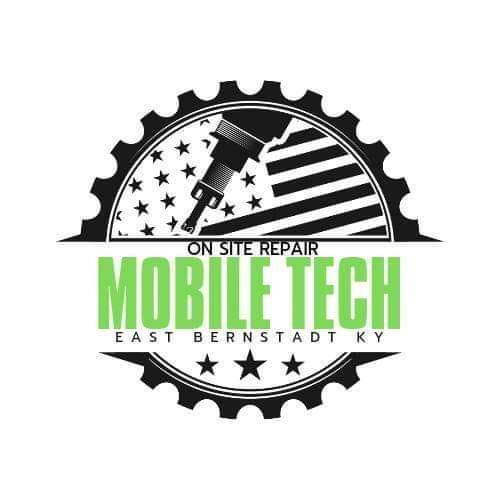DOT Inspection Readiness Guide for Commercial Trucks

Ensuring your commercial trucks are prepared for Department of Transportation (DOT) inspections is crucial for maintaining compliance, safety, and operational efficiency. This guide provides a comprehensive overview of DOT inspections, including the different levels, key components checked, and best practices to ensure your fleet is always inspection-ready.
Understanding DOT Inspections
DOT inspections are conducted to verify that commercial vehicles and their drivers comply with federal safety regulations. These inspections can occur at any time and location, including weigh stations, roadside checkpoints, or carrier facilities. There are eight levels of DOT inspections, each varying in scope:
Level I – North American Standard Inspection: A comprehensive 37-step inspection covering both driver credentials and vehicle components.
Level II – Walk-Around Driver/Vehicle Inspection: Similar to Level I but without the inspector physically getting under the vehicle.
Level III – Driver-Only Inspection: Focuses solely on the driver’s documentation and credentials.
Level IV – Special Inspection: A one-time examination of a specific item, often for research purposes.
Level V – Vehicle-Only Inspection: Conducted without the driver present, focusing entirely on the vehicle’s components.
Level VI – Enhanced NAS Inspection for Radioactive Shipments: Applies to vehicles transporting radioactive materials.
Level VII – Jurisdictional Mandated Inspection: Covers inspections mandated by specific jurisdictions, such as school buses or limousines.
Level VIII – Electronic Inspection: Conducted electronically or wirelessly while the vehicle is in motion.
Key Components Checked During Inspections
During DOT inspections, several critical areas are examined to ensure compliance and safety:
1. Driver Credentials and Documentation
Commercial Driver’s License (CDL): Must be valid and appropriate for the vehicle class.
Medical Examiner’s Certificate: Confirms the driver’s physical fitness to operate a commercial vehicle.
Hours of Service (HOS) Logs: Records of driving hours to ensure compliance with HOS regulations.
Driver Vehicle Inspection Reports (DVIRs): Documentation of pre-trip and post-trip inspections.
2. Vehicle Components
Brake System: Inspection of service brakes, parking brakes, and brake linings.
Steering Mechanism: Evaluation of steering components for wear or damage.
Lighting Devices: Functionality of headlights, tail lights, turn signals, and reflectors.
Tires and Wheels: Assessment of tire tread depth, inflation, and wheel integrity.
Fuel and Exhaust Systems: Checking for leaks, proper mounting, and secure connections.
Coupling Devices: Examination of fifth wheels, pintle hooks, and safety devices.
Suspension and Frame: Inspection for cracks, corrosion, or other structural issues.
Windshield Wipers and Mirrors: Ensuring clear visibility and proper operation.
Emergency Equipment: Verification of fire extinguishers, warning triangles, and spare fuses.
Best Practices for Inspection Readiness
To ensure your fleet is always prepared for DOT inspections, consider implementing the following best practices:
1. Regular Preventive Maintenance
Establish a routine maintenance schedule to address potential issues before they become violations. This includes regular checks of brakes, tires, lights, and other critical components.
2. Comprehensive Pre-Trip and Post-Trip Inspections
Drivers should conduct thorough inspections before and after each trip, documenting any defects or concerns in DVIRs. Promptly addressing these issues can prevent violations during DOT inspections.
3. Driver Training and Education
Ensure that drivers are well-versed in DOT regulations and understand the importance of compliance. Regular training sessions can keep drivers informed about changes in regulations and reinforce safe practices.
4. Maintain Organized Records
Keep all necessary documentation, such as maintenance records, inspection reports, and driver credentials, organized and readily accessible. This facilitates a smoother inspection process and demonstrates compliance.
5. Utilize Inspection Checklists
Implement standardized checklists for pre-trip, post-trip, and periodic inspections to ensure consistency and thoroughness. Digital tools can streamline this process and provide real-time updates.
Common Violations and How to Avoid Them
Understanding common violations can help you proactively address potential issues:
Brake Violations: Regularly inspect brake linings, hoses, and drums for wear and proper adjustment.
Lighting Violations: Ensure all lights are functional and lenses are clean and unobstructed.
Tire Violations: Monitor tire pressure and tread depth, replacing tires that show signs of excessive wear.
HOS Violations: Maintain accurate and up-to-date logs, and ensure drivers adhere to HOS regulations.
Driver Qualification Violations: Keep driver credentials current, including medical certificates and endorsements.
Preparing for Different Inspection Levels
Each level of DOT inspection has unique requirements:
Level I: Ensure both driver documentation and vehicle components are in compliance.
Level II: Focus on visible components and driver credentials, as inspectors will not go under the vehicle.
Level III: Emphasize accurate and complete driver documentation.
Level V: Even in the driver’s absence, the vehicle must meet all safety standards.
Level VI: For carriers transporting radioactive materials, additional protocols and documentation are required.
Leveraging Technology for Compliance
Modern technology can enhance your fleet’s compliance efforts:
Electronic Logging Devices (ELDs): Automate HOS tracking and reduce the risk of logbook violations.
Fleet Management Software: Monitor vehicle health, schedule maintenance, and store inspection records digitally.
Mobile Inspection Apps: Enable drivers to complete and submit inspection reports in real-time.
Conclusion
Staying prepared for DOT inspections is essential for the safety and efficiency of your commercial trucking operations. By understanding the inspection process, maintaining your vehicles, training your drivers, and leveraging technology, you can ensure compliance and minimize the risk of violations.
Implementing these best practices not only helps you pass inspections but also contributes to the overall safety of the roadways and the success of your business.
Need help getting your fleet inspection-ready? Contact Mobile Tech Enterprises LLC today for expert DOT compliance support, inspections, and preventive maintenance.

14 Responses